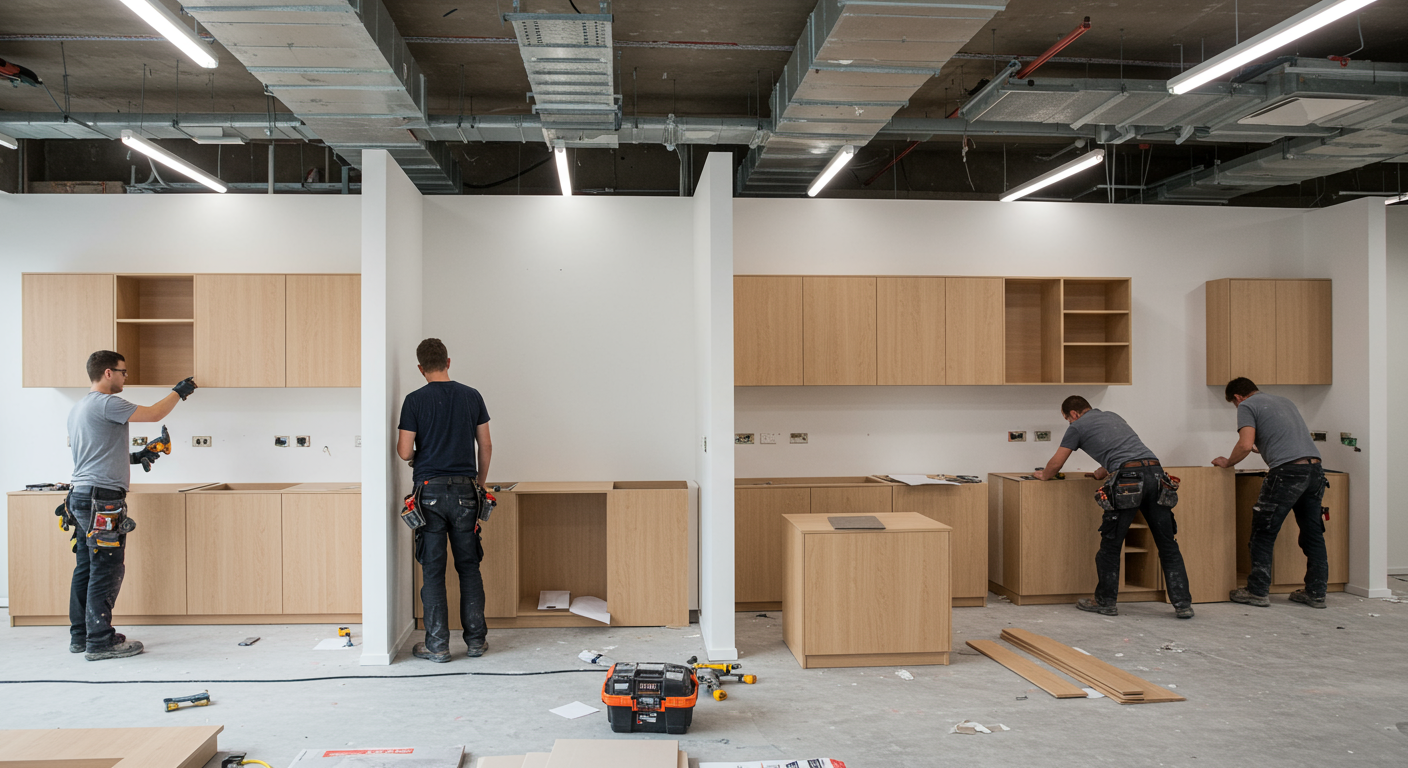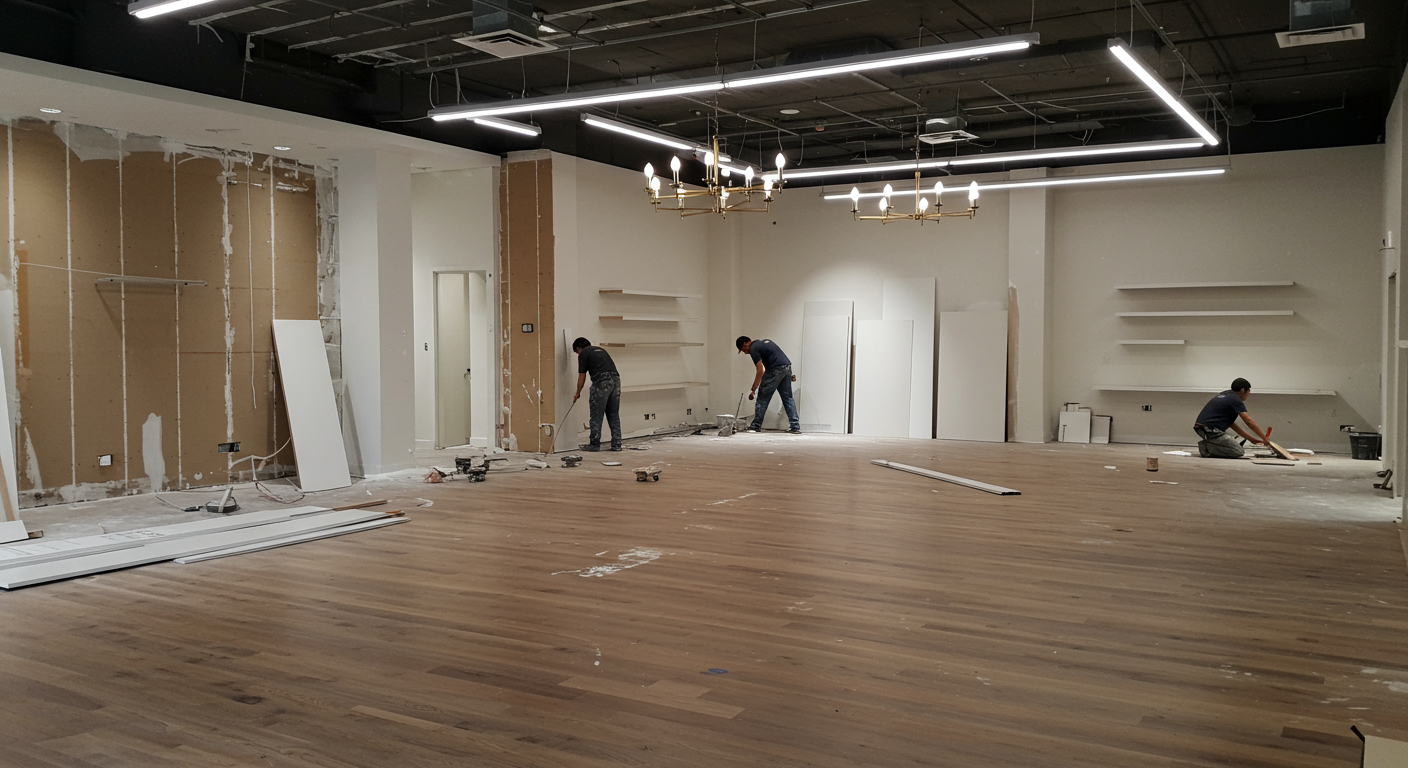- Defining Tenant Improvements and Betterments
- Why TI&B Coverage Matters in Commercial Real Estate
- Cost Allocation: Landlord vs. Tenant Responsibilities
- Available Coverage Options and Policy Limits
- Valuing Tenant Improvements for Insurance Purposes
- Filing a TI&B Claim: Step-by-Step
- Common Exclusions and Policy Restrictions
- Risk Mitigation and Preventive Measures
- Aligning Coverage with Lease Agreement Provisions
- Best Practices for Landlords, Tenants, and Brokers
- Conclusion
1. Defining Tenant Improvements and Betterments
Tenant Improvements and Betterments (TI&B) refer to alterations, additions, or enhancements that a tenant makes to a leased commercial space. Improvements are permanent changes—such as installing partition walls, upgraded lighting, or built-in cabinetry—that become part of the building’s structure.
Betterments are upgrades beyond the base building condition, like premium flooring or custom fixtures. Both kinds of work add value to the property but can also create insurance gaps if not properly covered. TI&B coverage fills those gaps by protecting the financial interests of tenants and landlords when loss or damage occurs.

2. Why TI&B Coverage Matters in Commercial Real Estate
1. Protects tenant investments: Tenants often invest hundreds of thousands to millions of dollars in build-outs and custom enhancements. If fire, flood, vandalism, or other perils destroy these improvements, TI&B coverage ensures funds are available to restore the space.
2. Safeguards landlord interests: Even though the landlord owns the structure, tenant improvements can increase total property value. Coverage prevents disputes over who pays for repair or replacement after a covered loss.
3. Reduces business interruption: Rapid replacement of damaged improvements helps tenants get back to business faster, minimizing rent loss and customer disruptions.
4. Complements property and liability policies: TI&B is a critical add-on or separate policy that addresses gaps left by standard commercial property insurance, ensuring comprehensive protection.
3. Cost Allocation: Landlord vs. Tenant Responsibilities
Lease agreements typically spell out who pays for TI&B and how insurance proceeds are allocated. Common arrangements include:
• Tenant bears build-out cost and insures improvements; landlord provides base building coverage.
• Landlord pays for upgrades but includes amortized costs in rent; landlord maintains insurance.
• Cost-sharing models where landlord covers structural components, tenant covers cosmetic or business-specific fixtures. Key points to negotiate:
• Definition of “building” vs. “tenant’s property.”
• Whether improvements revert to landlord at lease end and who insures during that period.
• Deductible responsibilities for claims affecting improvements.

4. Available Coverage Options and Policy Limits
TI&B coverage is available as part of a commercial property policy or as a standalone endorsement or policy. Key options include:
• Replacement Cost Coverage: Pays to repair or replace improvements at current costs without depreciation.
• Actual Cash Value (ACV): Pays replacement cost minus depreciation—lower premiums but less recovery.
• Agreed Value: Pre-agreed amount for improvements, eliminating coinsurance penalties.
• Scheduled Limit Endorsement: Lists each location’s TI&B value, ensuring full coverage up to the scheduled limit. When setting limits, calculate:
• Total build-out costs based on contractor estimates.
• Specialized equipment costs for custom fixtures.
• Soft costs such as design fees and permit expenses.
• Potential code-upgrade expenses triggered by rebuilding.
5. Valuing Tenant Improvements for Insurance Purposes
Accurate valuation prevents underinsurance. Steps include:
1. Collect construction budgets and contractor invoices.
2. Break out costs by category: structural, mechanical, finishes, fixtures, specialty equipment.
3. Consult third-party appraisal or cost estimating service for validation.
4. Factor in soft costs—architectural, engineering, permit, project management.
5. Review lease terms for reimbursement or amortization clauses that affect valuation.
6. Update valuations annually or whenever major build-outs occur to reflect inflation and market cost changes.

6. Filing a TI&B Claim: Step-by-Step
1. Immediate action: Secure the premises to prevent further damage and document the scene with photos and video.
2. Notify insurer: Report loss as soon as practical, providing policy details, lease agreements, and proof of improvements.
3. Preliminary assessment: Engage a public adjuster or claims consultant to estimate repair or replacement costs.
4. Submit documentation: Include contractor bids, material lists, invoices, lease provisions, and proof of tenant payments.
5. Coordinate inspections: Arrange for insurer’s adjuster to inspect and verify damage.
6. Negotiate settlement: Review insurer’s offer, verify depreciation deductions, and contest undervaluation if necessary.
7. Receive funds: Insurer issues payment—often in phases aligned with construction milestones.
8. Complete repairs: Use licensed contractors, keep records, and submit invoices for additional disbursements.
7. Common Exclusions and Policy Restrictions
TI&B coverage typically excludes:
• Wear and tear or gradual deterioration. /n • Defective workmanship or design flaws.
• Ordinance or law upgrades unless a separate ordinance coverage endorsement is added.
• Flood or earthquake perils unless specifically endorsed. /n • Damage caused by pests, vermin, or rodents.
• Tenant’s personal property (furniture, computers), which requires a business personal property policy.
Policy restrictions to watch for:
• Coinsurance requirement—maintain adequate limits based on a percentage of total value.
• Waiting periods for certain perils or business income extensions.
• Sub-limits on soft costs, debris removal, and expediting expenses.
8. Risk Mitigation and Preventive Measures
Preventive steps reduce exposure and can lower premiums:
• Conduct periodic building inspections to identify aging systems and address issues early.
• Implement property maintenance programs that include HVAC, plumbing, electrical, and roof checks.
• Secure premises with alarms, sprinkler systems, and monitored security.
• Use fire-resistant materials and install fire suppression or smoke detection upgrades.
• Train tenants on emergency procedures and loss reporting protocols.
• Review and update lease language to ensure clear allocation of TI&B insurance responsibilities.
9. Aligning Coverage with Lease Agreement Provisions
A well-drafted lease defines:
• Which party maintains and insures improvements.
• Procedures for rebuilding or restoring improvements after a loss.
• Rights of landlord to recover costs from tenant or insurer.
• Tenant’s obligation to maintain accurate records and notify landlord and insurer promptly.
• Provisions for rent abatement or extensions during repairs.
Ensure the insurance provisions match actual coverages by cross-referencing:
• Policy declarations and endorsement schedules.
• Lease exhibits listing improvements and cost responsibilities.
• Amortization schedules and reimbursement clauses to avoid coverage gaps.
10. Best Practices for Landlords, Tenants, and Brokers
Landlords should:
• Conduct periodic reviews of tenant-paid improvements and ensure adequate coverage.
• Include clear insurance clauses in leases that require tenants to name landlord as additional insured.
• Coordinate with brokers to verify policy limits and endorsement forms.
Tenants should:
• Get detailed cost breakdowns before signing and insure to full replacement cost value.
• Maintain records of invoices, change orders, and permits throughout build-out.
• Notify landlord of planned improvements and submit insurance certificates listing landlord as loss payee.
Brokers should: /n • Audit existing policies for TI&B gaps and advise clients on endorsements.
• Provide competitive quotes for replacement cost and agreed value options.
• Educate clients on emerging market trends, such as code upgrade exposures and soft cost coverage enhancements.
• Facilitate claim negotiations by explaining policy language and helping document losses.
Conclusion
By understanding how TI&B coverage works and aligning policy provisions with lease terms, commercial real estate stakeholders can protect their investments and reduce disputes.
Careful valuation, regular policy reviews, and proactive risk management ensure that improvements and betterments remain an asset rather than a liability.
